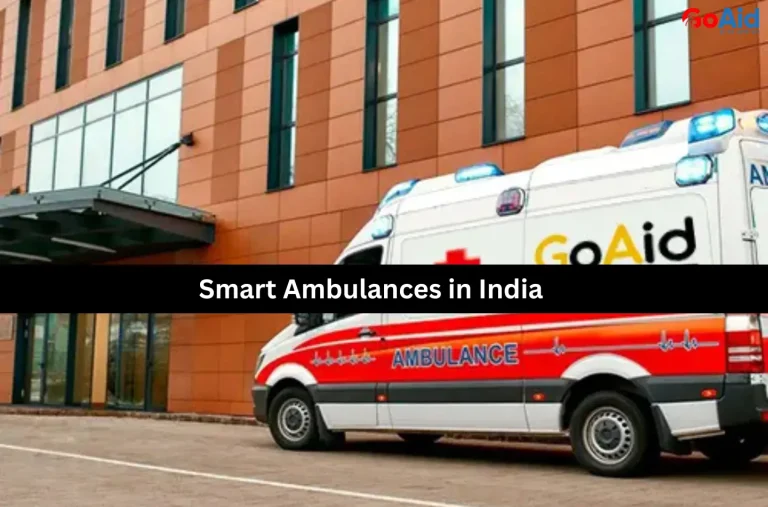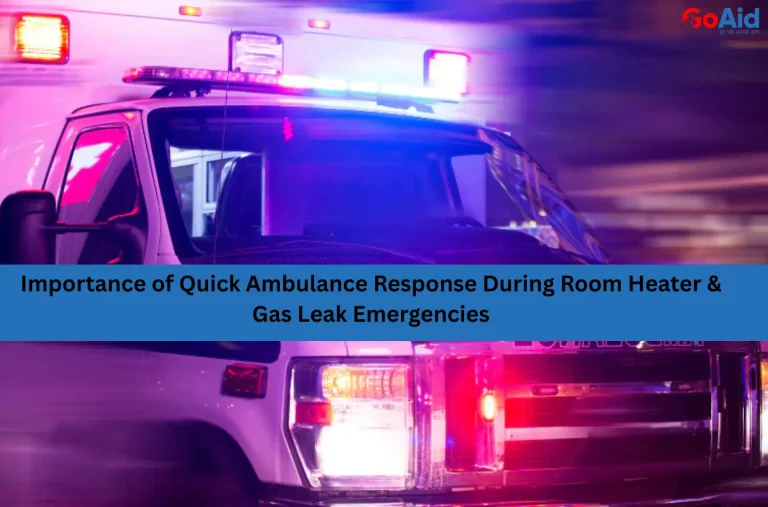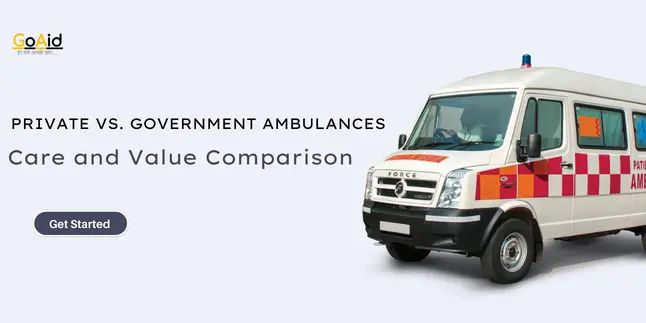It is important for you to know that the evolution from 4G to 5G technology is revolutionizing emergency healthcare. In ambulance services, speed & connectivity, and also real-time communication can make the difference between life and death.
4G ambulances support GPS tracking and telemedicine, and 5G-enabled ambulances promise ultra-fast data transfer. This advanced patient monitoring and seamless hospital coordination in a new era of smart ambulance technology in India.
What are 4G and 5G-enabled ambulances?
4G-enabled ambulances use fourth-generation network technology to support essential communication & GPS navigation, and also support basic video consultations during patient transport. They enable moderate-speed connectivity for real-time updates.┬Ā
In contrast, 5G-enabled ambulances utilize fifth-generation technology offering ultra-low latency, faster data exchange, and superior network reliability. This advancement allows real-time transmission of medical data, live video from the ambulance, and instant communication with doctors, transforming how emergency care is delivered across India through GoAidŌĆÖs 5G ambulance services.
How 4G Technology Powers Current Ambulance Services
4G connectivity has significantly enhanced ambulance operations, enabling faster communication and smoother coordination in emergencies. HereŌĆÖs how 4G technology supports todayŌĆÖs ambulance services:
- GPS Navigation and Tracking: 4G helps ambulances reach patients quickly with accurate GPS navigation and real-time location tracking.
- Telephonic Communication: Paramedics can instantly connect with hospital teams for guidance during critical emergencies.
- Live Patient Updates: Enables paramedics to share essential patient data, such as pulse and blood pressure, through stable internet connectivity.
- Online Booking Integration: Supports quick ambulance booking through apps like GoAid, making emergency response faster and easier.
- Video Consultation Support: Allows limited video conferencing for remote doctor consultations in areas with strong 4G networks.
- Digital Record Keeping: Facilitates uploading of medical details and trip reports for hospitals to access immediately.
Coordination with Emergency Hotlines: Strengthens communication between ambulance control centers and local emergency networks for quicker dispatch.
The Arrival of 5G: A Game Changer for Emergency Healthcare
The introduction of 5G technology marks a revolutionary step in emergency healthcare. With lightning-fast speed and ultra-low latency, 5G allows seamless real-time communication between ambulances and hospitals. Doctors can now monitor patients remotely through HD video and connected medical devices, ensuring faster and more precise treatment.
It supports IoT-based tools, AI monitoring, and cloud data sharing, which makes every second count during critical emergencies. With GoAidŌĆÖs commitment to smart ambulance technology, IndiaŌĆÖs emergency services are evolving to deliver life-saving care faster, safer, and more efficiently than ever before.
How 5G Improves Patient Care During Transit
5G technology is transforming patient care inside ambulances by providing faster connectivity, real-time monitoring, and enhanced coordination with hospitals. HereŌĆÖs how it ensures better outcomes during medical transport:
- Real-Time Video Consultation: 5G allows doctors to connect instantly with paramedics through HD video for immediate guidance in critical situations.
- Instant Data Transmission: Vital signs, ECGs, and scans are shared instantly with hospitals, enabling faster diagnosis and treatment decisions.
- AI-Based Monitoring Tools: Integrates AI-powered devices that analyze patient health data in real time for early risk detection.
- Seamless Hospital Coordination: Enables hospitals to prepare operating rooms or ICUs before the patientŌĆÖs arrival for faster medical response.
- Remote Diagnostics: Doctors can assess patientsŌĆÖ conditions remotely through smart, connected devices inside the ambulance.
- Enhanced Network Reliability: Provides uninterrupted connectivity even in remote or high-traffic areas, ensuring consistent patient monitoring.
- IoT Integration in Ambulances: Connects multiple medical devices, ensuring synchronized and accurate real-time data during patient transport.
Key Differences Between 4G and 5G Ambulances
You should know that both 4G and 5G technologies have advanced emergency healthcare. 5G brings a transformative leap in connectivity, data sharing, and patient monitoring. HereŌĆÖs a quick comparison between the two:
| Aspect | 4G Ambulance | 5G Ambulance |
| Network Speed | Moderate speed suitable for GPS and video calls | Ultra-fast speed for real-time HD video and instant data transfer |
| Latency | 50ŌĆō100 milliseconds | 1ŌĆō10 milliseconds (near-zero delay) |
| Connectivity | Occasional network lags | Stable, uninterrupted connection |
| Data Sharing | Limited data exchange | High-volume, real-time data sharing |
| Remote Monitoring | Basic patient updates | Advanced IoT-enabled continuous monitoring |
| Video Consultation | Supports standard video quality | Enables HD and AR-based live consultations |
| Technology Integration | GPS, telemedicine apps | AI, IoT, and cloud-based health systems |
The Role of GoAid in Adopting Smart Ambulance Technology
GoAid ambulance Service is at the forefront of integrating advanced communication technologies into emergency healthcare. As India moves toward digital transformation, GoAid is upgrading from 4G to 5G-enabled ambulance systems to deliver faster, smarter, and safer care.
These smart ambulances are equipped with IoT medical devices, real-time patient monitoring, and HD video consultation features. By partnering with hospitals and leveraging cutting-edge tools,
GoAid ensures seamless data transfer and quick response in emergencies. Through its continuous innovation, GoAid aims to redefine how ambulances operate, which brings life-saving treatment closer to patients before they even reach the hospital.
Features of GoAid Ambulance Service
GoAid stands out for its commitment to fast, affordable, and technology-driven emergency services. Here are the key features that make it IndiaŌĆÖs most trusted ambulance provider:
- 10-Minute Response Time: GoAid ensures ambulances reach the patientŌĆÖs location within just 10 minutes of booking.
- 24/7 Availability: Services are available day and night, every day of the year, including holidays.
- Multiple Booking Options: Users can book easily via the GoAid App or by calling 8008280020.
- Diverse Ambulance Fleet: Offers Normal, BLS, ALS, ICU Ventilator, and Dead Body Freezer Box ambulances.
- Affordable Rates: Provides the most affordable, transparent, and regulated pricing in India.
- Interstate Ambulance Services: Enables long-distance patient transfers with professional paramedic support.
Challenges in Implementing 5G Ambulance Systems in India
There is no doubt that 5G technology promises to revolutionize emergency healthcare, however, its implementation in India faces several challenges. Here are the major barriers that need to be addressed:
- Limited Network Coverage: 5G infrastructure is still developing, making it difficult to ensure connectivity in rural and remote areas.
- High Setup Cost: Advanced 5G medical devices and ambulances require heavy investment, making large-scale adoption challenging.
- Technical Training Needs: Paramedics and medical staff require proper training to operate 5G-enabled systems effectively.
- Data Security Concerns: Transmitting patient information online raises privacy and cybersecurity challenges that must be managed carefully.
- Integration with Existing Systems: Upgrading 4G ambulances to 5G requires compatibility with current hospital networks and software.
- Government Regulations: Approvals and compliance standards for 5G medical use are still evolving in India.
- Power and Maintenance Requirements: 5G devices demand higher energy and regular maintenance, increasing operational complexity.
The Future of Smart Ambulance Connectivity in India
The future of emergency healthcare in India is heading toward fully connected, AI-driven, and 5G-enabled ambulances. With the integration of IoT and cloud-based systems, patient data will be shared instantly with hospitals, ensuring faster treatment decisions. As telecom infrastructure expands, even rural areas will benefit from advanced emergency response.┬Ā
Companies like GoAid are leading this shift by adopting next-generation technologies, aiming to deliver more efficient, data-driven, and life-saving ambulance services across the nation. The coming years will redefine emergency care, which is powered by speed, precision, and smart connectivity.
Conclusion to the Difference Between 4G and 5G Enabled Ambulances
The shift from 4G to 5G ambulances represents a breakthrough in emergency response. With faster connectivity, real-time monitoring, and IoT integration, GoAidŌĆÖs 5G ambulances are setting new standards in patient care and speed, which proves that technology truly saves lives.
FAQs related to the Difference Between 4G and 5G Enabled Ambulances
Question 1: What is the main difference between 4G and 5G-enabled ambulances?
Answer: The main difference lies in speed and connectivity. 5G ambulances provide real-time data transfer, HD communication, and IoT integration for advanced patient monitoring.
Question 2: How does 5G technology benefit ambulance services in India?
Answer: 5G enables faster response times, seamless hospital coordination, real-time health monitoring, and HD video consultations during patient transport.
Question 3: Is GoAid introducing 5G ambulances in India?
Answer: Yes, GoAid is actively adopting 5G-enabled ambulance technology to deliver faster, smarter, and more efficient emergency healthcare nationwide.
Question 4: What are the key features of 5G connected ambulances?
Answer: 5G ambulances feature ultra-fast connectivity, AI-based monitoring, instant data sharing, IoT integration, and seamless communication with hospitals.
Question 5: Are 4G ambulances still effective for emergency services?
Answer: Yes, 4G ambulances remain reliable for communication, GPS tracking, and telemedicine but lack the advanced features of 5G systems.
Question 6: What challenges does India face in implementing 5G ambulance systems?
Answer: The main challenges include high costs, limited network coverage, cybersecurity issues, and the need for specialized training.
Question 7: What is the future of 5G ambulance services in India?
Answer: The future involves nationwide 5G connectivity, AI-assisted care, and fully smart ambulances, which ensure faster, safer, and more connected emergency responses.
















